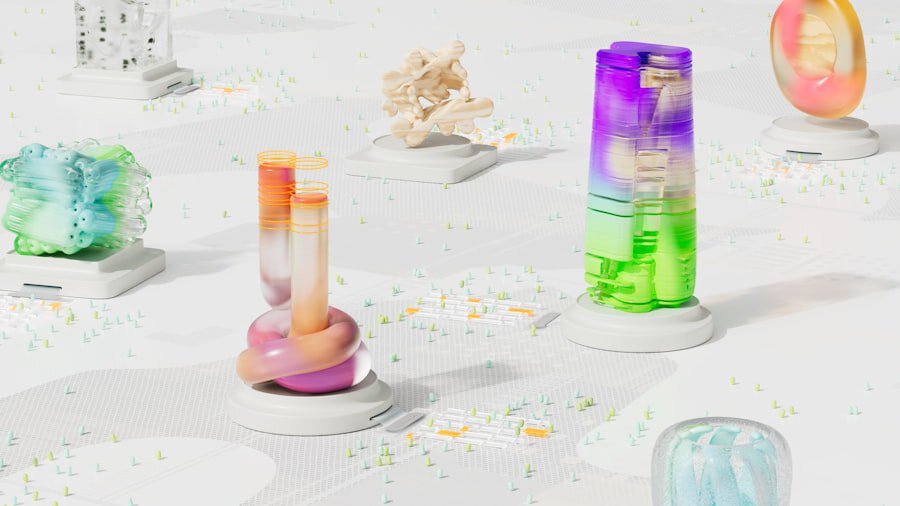Autoencoders are a specialized type of artificial neural network used in machine learning and artificial intelligence for data compression and representation learning. Their architecture consists of three main components: an input layer, a hidden layer, and an output layer. The input layer receives raw data, which is then compressed by the hidden layer and reconstructed at the output layer.
The primary objective of an autoencoder is to minimize the discrepancy between the input and output data, effectively learning to recreate the input with maximum accuracy. In recent years, autoencoders have gained prominence due to their capacity to learn meaningful representations of complex data. This capability makes them valuable in various applications, including image and signal processing, anomaly detection, and feature learning.
By learning efficient data representations, autoencoders facilitate dimensionality reduction, which is essential for tasks such as visualization, noise reduction, and feature extraction. This article will explore the concept of data compression and its significance in AI, the function of autoencoders in data compression, their advantages and applications, as well as the challenges and future developments in this field.
Key Takeaways
- Autoencoders are a type of artificial neural network used for unsupervised learning that aims to learn efficient representations of data.
- Data compression is crucial in AI as it reduces the storage and computational requirements, and autoencoders play a key role in achieving this.
- Autoencoders work by encoding the input data into a lower-dimensional representation and then decoding it back to its original form, effectively compressing the data.
- The benefits and applications of autoencoders in AI include image and signal denoising, anomaly detection, and dimensionality reduction.
- Despite their advantages, autoencoders also have limitations such as difficulty in training and the potential loss of information during compression.
Understanding Data Compression and its Importance in AI
Challenges of High-Dimensional Data
High-dimensional data can be computationally expensive to process and may lead to overfitting, where the model performs well on the training data but poorly on unseen data.
Benefits of Data Compression in AI
By compressing the data into a lower-dimensional space, machine learning models can learn more efficiently and effectively. Furthermore, data compression is essential for handling large volumes of data in AI applications. With the increasing availability of big data, it is becoming increasingly challenging to store and process massive datasets.
Techniques and Advantages
Data compression techniques such as autoencoders can help in reducing the storage requirements and computational overhead associated with handling large datasets. Additionally, compressed representations of data can lead to faster inference and prediction times, making machine learning models more practical for real-time applications. Overall, data compression is a fundamental aspect of AI that enables more efficient and scalable machine learning systems.
The Role of Autoencoders in Data Compression

Autoencoders play a pivotal role in data compression by learning compact representations of high-dimensional data. The process of data compression using autoencoders involves training the network to reconstruct the input data from a lower-dimensional representation, known as the latent space. The latent space captures the most important features of the input data while discarding redundant or irrelevant information, effectively compressing the data into a more compact form.
This compressed representation can then be used for various tasks such as denoising, dimensionality reduction, and feature extraction. One of the key advantages of using autoencoders for data compression is their ability to learn non-linear transformations of the input data. Traditional compression techniques such as PCA (Principal Component Analysis) are limited to linear transformations, which may not capture complex patterns and structures present in the data.
Autoencoders, on the other hand, can learn non-linear mappings that are better suited for capturing intricate relationships within the input data. This makes them particularly effective for tasks such as image and audio compression, where non-linear features are prevalent. In addition to their ability to learn non-linear transformations, autoencoders are also capable of unsupervised learning, meaning they can learn efficient representations of data without requiring labeled examples.
This makes them versatile for a wide range of applications where labeled data may be scarce or expensive to obtain. Overall, autoencoders serve as powerful tools for data compression by learning compact representations of high-dimensional data in an unsupervised manner.
Benefits and Applications of Autoencoders in AI
| Benefits and Applications of Autoencoders in AI | |
|---|---|
| Benefits | Applications |
| 1. Dimensionality reduction | 1. Anomaly detection |
| 2. Feature learning | 2. Image denoising |
| 3. Unsupervised learning | 3. Recommendation systems |
| 4. Data compression | 4. Signal processing |
The benefits of using autoencoders for data compression extend beyond just reducing storage requirements and computational overhead. Autoencoders have found numerous applications in AI and machine learning due to their ability to learn meaningful representations of complex data. One of the key applications of autoencoders is in image compression, where they can learn efficient representations of images that preserve important visual features while discarding unnecessary details.
This is particularly useful for applications such as image recognition, where compressed representations can lead to faster inference times and reduced storage requirements. Another important application of autoencoders is in anomaly detection, where they can learn normal patterns from input data and identify deviations from these patterns. By learning a compact representation of normal data, autoencoders can effectively detect anomalies or outliers in real-time, making them valuable for tasks such as fraud detection, network security, and predictive maintenance.
Additionally, autoencoders are widely used for feature learning, where they can automatically extract relevant features from raw data without requiring manual feature engineering. This is particularly beneficial for tasks such as natural language processing, where autoencoders can learn semantic representations of text data without human intervention. Furthermore, autoencoders have been applied in generative modeling tasks such as image generation and denoising.
By learning efficient representations of input data, autoencoders can generate new samples that resemble the original data distribution, making them valuable for tasks such as image synthesis and restoration. Overall, the versatility and effectiveness of autoencoders make them indispensable tools in various AI applications.
Challenges and Limitations of Autoencoders in Data Compression
While autoencoders offer numerous benefits and applications in AI, they also come with certain challenges and limitations that need to be addressed. One of the primary challenges of using autoencoders for data compression is the potential loss of information during the compression process. Since autoencoders aim to learn compact representations of input data, there is a risk of losing important details or features that are crucial for downstream tasks such as classification or prediction.
Balancing the trade-off between compression efficiency and information preservation is a critical challenge in designing effective autoencoder models. Another limitation of autoencoders is their sensitivity to noise and outliers in the input data. Since autoencoders learn to reconstruct the input data with as much fidelity as possible, they may struggle to handle noisy or corrupted input samples.
This can lead to poor reconstruction quality and degraded performance in tasks such as denoising or anomaly detection. Robustifying autoencoder models against noisy inputs is an ongoing research challenge that requires developing more resilient architectures and training strategies. Furthermore, autoencoders may suffer from scalability issues when dealing with high-dimensional or large-scale datasets.
Training deep autoencoder models on massive datasets can be computationally intensive and may require significant computational resources. Additionally, designing efficient architectures for capturing complex patterns in high-dimensional data remains a challenging task that requires careful model design and optimization. Overall, addressing these challenges and limitations is crucial for harnessing the full potential of autoencoders in data compression and AI applications.
Future Developments and Innovations in Autoencoders for Data Compression

The field of autoencoders is continuously evolving with ongoing developments and innovations aimed at addressing existing challenges and expanding their capabilities. One area of future development is in designing more robust and adaptive autoencoder architectures that can handle noisy and high-dimensional data more effectively. This involves exploring novel training techniques such as adversarial training and self-supervised learning to improve the robustness of autoencoder models against noisy inputs.
Another area of innovation is in leveraging deep learning techniques such as convolutional and recurrent neural networks for building more powerful autoencoder models. These architectures are well-suited for capturing spatial and temporal dependencies in complex data such as images and time series, making them valuable for tasks such as image compression and sequence modeling. Furthermore, there is ongoing research in developing specialized variants of autoencoders tailored for specific types of data such as text, audio, and video.
These specialized architectures aim to capture domain-specific features and structures present in different types of data, leading to more efficient compression and reconstruction performance. Additionally, advancements in hardware acceleration technologies such as GPUs and TPUs are enabling faster training and inference times for deep autoencoder models, making them more practical for real-world applications with large-scale datasets. Overall, future developments in autoencoders are focused on enhancing their robustness, scalability, and domain-specific capabilities to further expand their utility in data compression and AI.
Harnessing the Power of Autoencoders in AI and Data Compression
In conclusion, autoencoders play a crucial role in data compression by learning efficient representations of high-dimensional data. Their ability to capture complex patterns and structures makes them valuable tools in various AI applications such as image processing, anomaly detection, feature learning, and generative modeling. While they come with challenges such as information loss, sensitivity to noise, and scalability issues, ongoing developments in robust architectures, deep learning techniques, and specialized variants are paving the way for addressing these limitations.
As AI continues to advance with the increasing availability of big data, harnessing the power of autoencoders will be essential for building more efficient and scalable machine learning systems. Their ability to compress large volumes of data into compact representations while preserving important features makes them indispensable for handling complex real-world datasets. With ongoing developments and innovations in this field, autoencoders are poised to play an even more significant role in shaping the future of AI and data compression.
If you’re interested in learning more about the potential applications of autoencoders in virtual worlds and metaverse platforms, check out this article on metaverse platforms and ecosystems. It discusses the role of virtual worlds in shaping the future of social interactions and how technologies like autoencoders could play a crucial role in enhancing user experiences within these virtual environments.
FAQs
What is an autoencoder?
An autoencoder is a type of artificial neural network used for unsupervised learning. It aims to learn efficient representations of data by training the network to reconstruct its input.
How does an autoencoder work?
An autoencoder consists of an encoder and a decoder. The encoder compresses the input data into a lower-dimensional representation, while the decoder reconstructs the original input from this representation.
What are the applications of autoencoders?
Autoencoders are used in various applications such as image and video compression, anomaly detection, denoising, feature learning, and dimensionality reduction.
What are the types of autoencoders?
Some common types of autoencoders include vanilla autoencoders, sparse autoencoders, denoising autoencoders, variational autoencoders (VAEs), and convolutional autoencoders.
What are the advantages of using autoencoders?
Autoencoders can learn meaningful representations of data, reduce dimensionality, and are capable of handling noisy or incomplete input.
What are the limitations of autoencoders?
Autoencoders may suffer from overfitting, and the quality of the learned representations heavily depends on the architecture and hyperparameters chosen for the network.











Leave a Reply